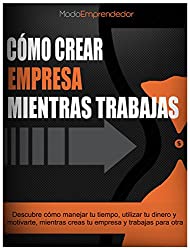
In this article you will know 2 steps to achieve financial freedom and that you will allow yourself to put your economy in order and forever.
The idea to share the following tips with more people came from Mr. Frugalwood’s good reputation for managing his personal finances. At only 32 years old, he and his wife have managed to have their own home (the mortgage is the only debt they have), know how to save 71% of your salary and have a financial plan that will allow them to retire at very early age.
The objective of Mr. Frugalwoods is to create a resource that refers to the guidelines that he and his wife have to have a successful financial life, and that people “inexperienced” or new to the subject can have an excellent reference.
2 easy steps to achieve financial freedom.
Step 1: Analyze what you have and what you owe.
The first step to achieve financial freedom is to understand what you have and what you owe. Since there is no point in making a plan for the future if you do not know how your current financial picture is. This can be more difficult than it seems, but it is an essential step.
A lot of people use the “ostrich” method in their personal finances; they are sticking their heads in the sand to ignore their situation and continue on the path.
This can be overwhelming, intimidating, even embarrassing; but it’s time to find out exactly what your debts are and what your assets are. It is not worth making other plans before this is not clear.
Make a list of your assets and debts:
Active.
Savings, dividends, pension plans, the equity in your home, car, and any other assets of substantial value. Be honest when making this list, do not include household dishes.
For example, the Frugalwood family does not include any of their possessions in the list of their assets, mainly because their estimate of their value is quite conservative in calculating their net worth. However, if you own something of real value, include it.
Debts.
Student loans, mortgage loans, free investment, credit cards, loans for the purchase of vehicles, personal and/or family loans, among others.
In this list, take into account the details of each of these items, make sure you know the term of the debt (how long you have to pay it off), and the interest rates. If you own stocks, be aware of the administration fees your stockbroker is charging.
Now make another list of your monthly expenses:
-
-
- Rent
- Profits
- Cost of cable TV, cell phone, internet.
- Food
- Expenses in restaurants and bars
- Pets
- Kids
- Toiletries
- Gasoline
- Transportation
- Health
- Clothing
- Etc.
-
Making this list can be a daunting task, especially if you have more than one credit card or multiple bank accounts. If this is the case, Mr. Frugalwood recommends you use some sort of software, as this is the method he and his wife use to keep track of all their income and expenses.
Especially they use two tools for this reason:
Mint: Gives you a good overview. This application allows you to gather all your financial information, track your expenses, create budgets and save money, among others.
Personal Capital: it is ideal for monitoring investments and expenses. It continually innovates, however, it is not flexible in the categorization of elements. Of course, both are free and safe, so it is recommended that you try both and see which one best suits your financial needs.

“Live without regrets”
The key to this process is to internalize the reality that the past is past, and has been left behind. You can’t go back in time and decide not to spend the money you already spent.
Don’t hold back for the bad decisions that have already happened, everyone has made bad decisions in their financial past. Instead, commit to starting over. Get started today!
Step 2: Create an emergency fund
The second of the steps to achieve financial freedom is to create an emergency fund. Remember that a financial cushion is the difference between a well-resolved calamity or a spiraling downward into more debt.
When something unexpected happens. For example, a family member dies and you have to travel at the last minute. You don’t want these extra expenses to be the reason why you couldn’t pay your rent/mortgage or why you couldn’t pay your electric bill.
Generally speaking, the idea of this fund is to be in a financial position that allows you not to panic if you lose your job tomorrow.
The prudent amount to have in this fund, according to Mr. FW, is equal to 3-6 months of covered basic expenses. The amount would increase more if you work in an industry that suffers from boom and bust cycles. As for example in the construction or oil sector.
Keep this emergency fund in a savings account, or in checking, where it is available, but not too much. This does not mean that every time you consider that you have an unexpected expense, you go to it. If you do so, you must prioritize and replenish this amount with your next payment.
As you see it, it is vital that you know how to make an emergency fund.
Conclusion.
While these first two steps to achieving financial freedom may seem somewhat rudimentary and simplistic, they are nonetheless important. Since without a clear and honest vision of your financial situation, and therefore, of your emergency fund that allows you to have a cushion in case of future emergencies; investing and planning your retirement would not make any sense. It would be like trying to run before knowing how to walk.
For the Frugalwoods family, meticulously managing their finances is what is allowing them to plan for early retirement.
They have not won the lottery or made a lot of money thanks to the stock market; they have been seriously frugal, conscientious, and compromised about how they have saved and invested the money they have.
There is no old trick for building financial stability, it is about being careful, keeping your accounts clear, with basic math that is focused on investing.
And remember, if you are really interested in creating your own business, you can read our book “How to create a company while working: Discover how to manage your time, manage your money and motivate yourself while creating a company and working for another” , where you will find all the information you need to found your own company, without having to leave your job.



